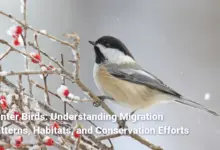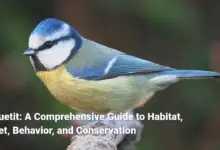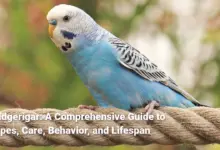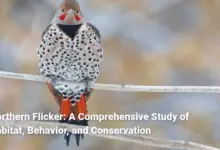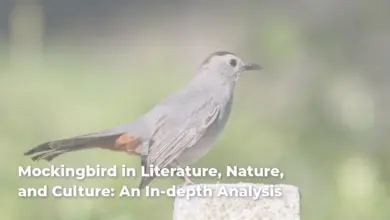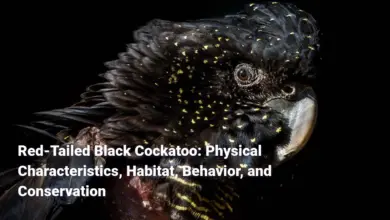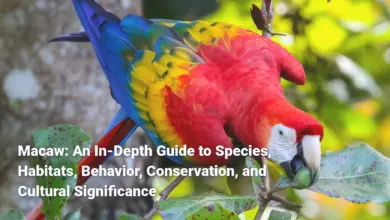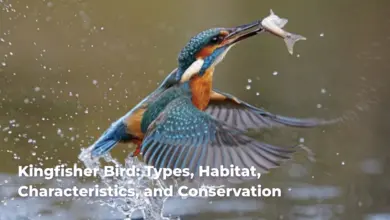Finch Bird: Exploring Varieties, Habitats, Behavior, Vocalization, and Conservation Efforts
An In-Depth Exploration of Finch Bird Varieties, Habitats, Behavior, Vocalization Patterns, and Their Role in Conservation and Culture
Finch Bird: An In-Depth Look
Finch birds, characterized by their diverse appearance, delightful melodies, and social structures, are an engaging and varied group that captures the imagination of birdwatchers and nature enthusiasts alike. Belonging to the family Fringillidae, finches comprise more than 240 species with distinct adaptations suited to their unique environments. Finch songs resonate in parks, gardens, and forests, creating a vibrant tapestry of sounds that enriches the natural world. Their cheerful chirps and brilliant colors add to their allure, making them popular among bird lovers.
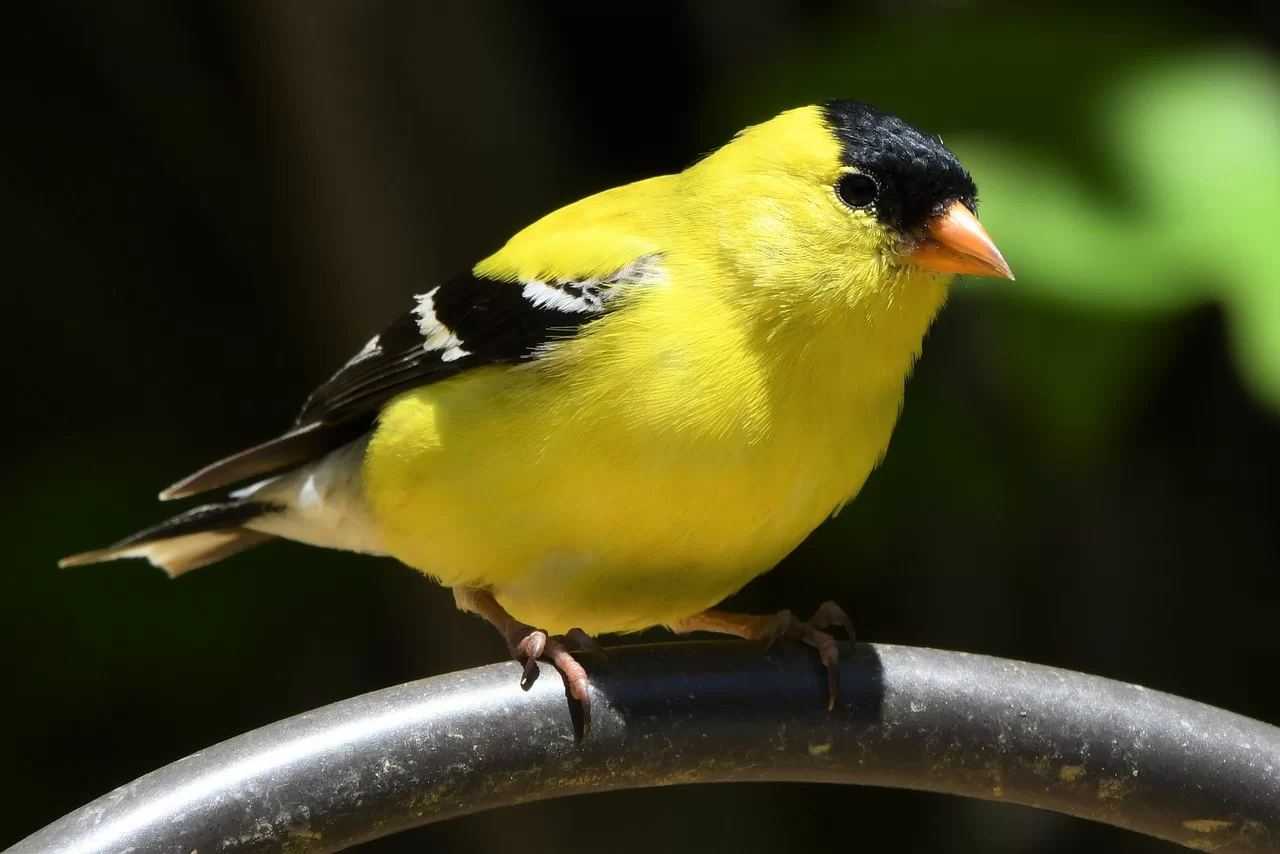
In this comprehensive exploration of finches, we will delve into their types, habitats, behaviors, vocalizations, conservation status, and cultural significance. By examining their intricate life patterns, we can appreciate how these charming birds contribute to ecological balance and reflect broader environmental changes. Understanding finches not only satisfies our curiosity about these delightful birds but also emphasizes the need for conservation efforts to protect their diverse habitats from the myriad threats they face today.
Types of Finch Birds
Finches come in numerous varieties, each telling a story of evolution and adaptation. Imagine a vibrant artist’s palette, where every color and shade represents a different finch species. Some are urban dwellers, while others are remote forest inhabitants. Here is a brief comparison of common and rare finch species:
| Finch Species | Habitat | Diet | Notable Features |
|---|---|---|---|
| House Finch | Urban areas, parks | Seeds, fruits | Males: reddish, Females: streaked brown |
| Purple Finch | Mixed forests | Seeds, insects | Males: rosy red, Females: brownish |
| American Goldfinch | Fields, gardens | Seeds (vegetarian) | Males: brilliant yellow in summer, olive brown in winter |
| Evening Grosbeak | Northern forests | Seeds, berries | Males: bright yellow, black wings |
| Mangrove Finch | Mangrove ecosystems | Insects and seeds | Highly specialized, vulnerable |
| Darwin’s Finches | Galápagos Islands | Varied (adaptive radiation) | Distinct beak shapes |
From the ubiquitous House Finch to the rare Mangrove Finch, each species reflects the diverse ecosystems in which they thrive. Their unique beak shapes and dietary preferences illustrate how finches have adapted to their surroundings, showcasing the impressive power of evolution.
Common Finch Bird Varieties
Common finches, such as the House Finch and American Goldfinch, often thrive in environments shaped by human activities. Their ability to adapt quickly to urban landscapes reveals the resilience inherent in their nature. For instance, the House Finch, initially native to the western United States, significantly expanded its range after being introduced to the eastern regions. Today, this adaptable bird can be found in various habitats, from city parks to residential backyards.
The American Goldfinch is another delightful specimen, known for its elegant yellow plumage. Its diet is quite specialized, as it primarily consumes seeds, particularly those of sunflowers and dandelions. The Goldfinch’s strict vegetarian lifestyle highlights a fascinating aspect of evolution; its beak is perfectly adapted for extracting seeds, which perfectly complements its habitat in open fields and gardens.
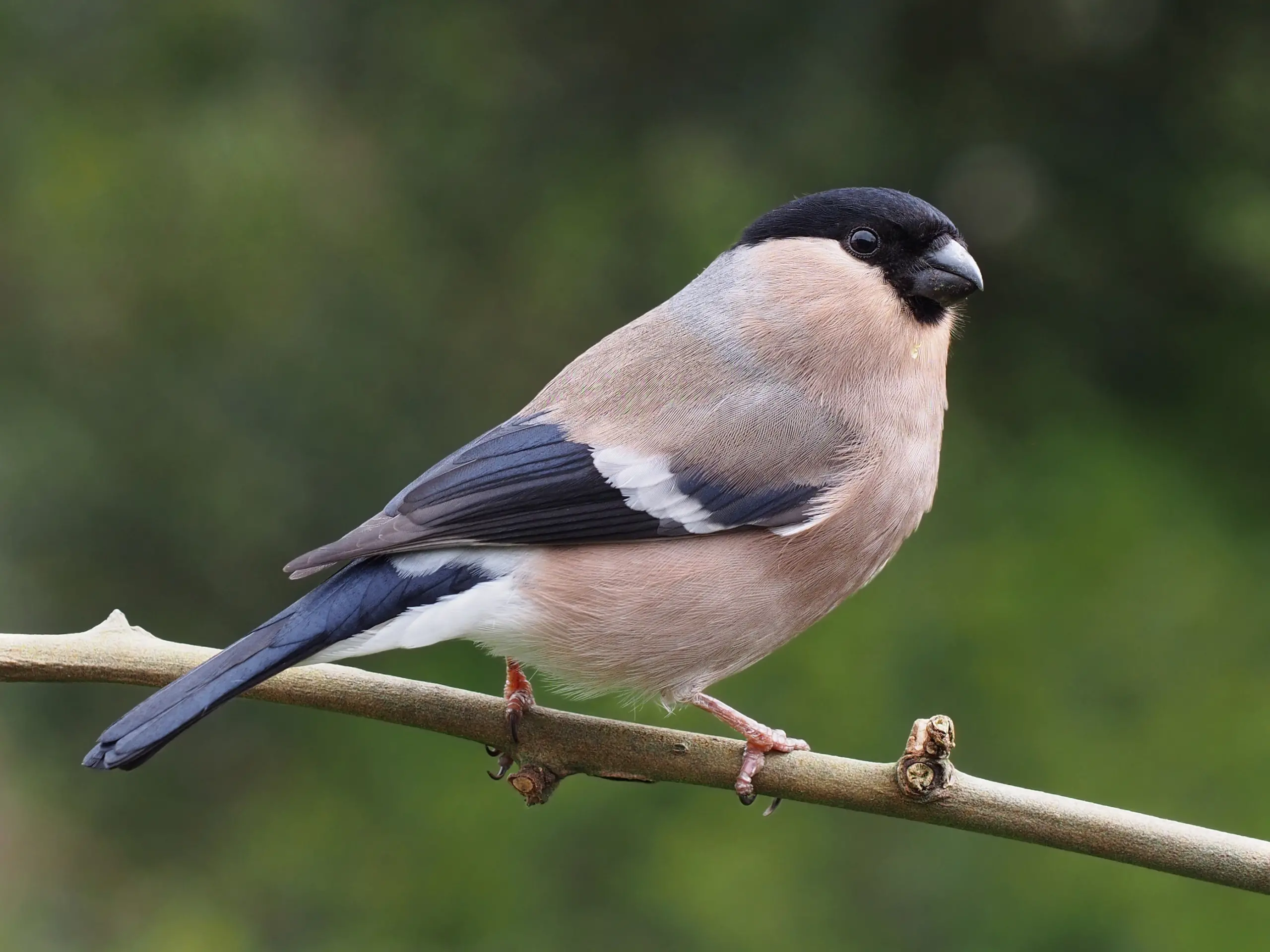
Interestingly, finches like the Evening Grosbeak and Pine Siskin display unique social dynamics. Evening Grosbeaks are often seen feeding in large flocks during the winter, demonstrating a strong preference for coniferous seeds. In contrast, the Pine Siskin exhibits a lively and social nature, often forming groups that can be both cohesive and dynamic.
The adaptability of these common finch varieties is further exemplified by their vocalizations. Finch songs encapsulate their essence bright, melodic, and ever-present. The cheerful tunes of the House Finch can brighten any urban setting, while the American Goldfinch’s complex song during courtship captivates listeners, symbolizing the interconnectedness of life.
Rare Finch Bird Species
In stark contrast to common species, rare finch species often inhabit specialized environments and face heightened threats. The Mangrove Finch, for instance, is critically endangered and restricted to specific mangrove ecosystems. Recognized for its ecological specialization, the Mangrove Finch is vulnerable to habitat loss and invasive species, particularly the parasitic fly Philornis downsi, which poses a significant threat to its chicks.
Darwin’s Finches represent another remarkable group, found exclusively in the Galápagos Islands. This iconic group consists of 15 species, each with unique beak shapes and sizes adapted for specialized feeding strategies. The adaptive radiation seen in Darwin’s Finches highlights an extraordinary evolutionary phenomenon, as each species occupies a different ecological niche, exploiting various food sources.
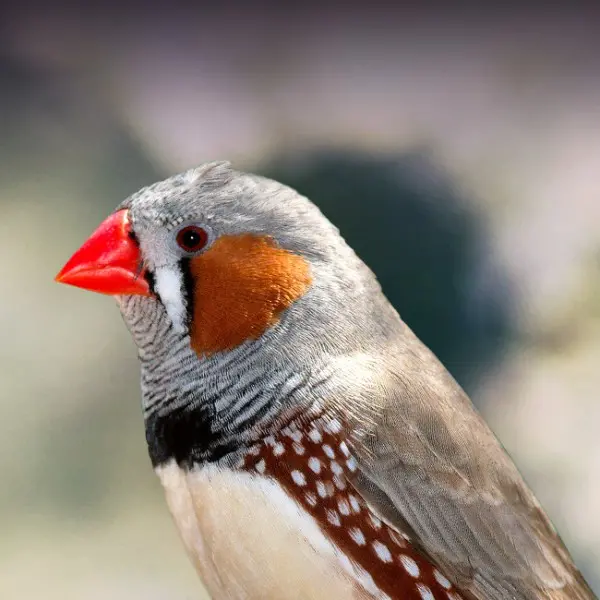
The Medium Ground Finch and Large Ground Finch are notable among them, showcasing how certain beak adaptations allow for feeding on seeds and insects available in their habitats. This divergence not only demonstrates how different species can coexist by occupying unique niches within a shared ecosystem, but it also emphasizes the challenges they face, as habitat loss and environmental changes threaten their survival.
Understanding the plight of these rare finch species is essential for conservation efforts. Protecting and restoring their habitats is the key to ensuring their continued existence in a rapidly changing world.
Geographic Distribution of Finch Birds
Finch species inhabit a diverse array of geographic regions, ranging from urban areas and gardens to remote islands and alpine tundra. This distribution showcases the adaptability and resilience of finches in varied environments.
- Widely Distributed Species: Many common finches, like the House Finch and American Goldfinch, thrive in human-influenced habitats, extending their range alongside urban developments. Their presence in residential areas and parks reflects their ability to capitalize on food sources provided by human activity.
- Specialized Regions: On the other hand, rare species, such as the Mangrove Finch and Darwin’s Finches, are restricted to specific geographic regions. These species often depend on particular ecological conditions, making them vulnerable to habitat changes. For example, Darwin’s Finches are endemic to the Galápagos Islands, a microcosm of evolution where isolation has led to the development of distinct traits.
- Migration Patterns: Certain finches, like the American Goldfinch, exhibit migratory behavior. In North America, they typically breed in the northern regions and migrate southward during winter months. This seasonal movement is influenced by weather conditions and food availability.
- Conservation Hotspots: Several finch species, such as the Southern Black-throated Finch, have specific geographic distributions that overlap with critical conservation areas. Protecting these habitats is crucial for maintaining their populations and ensuring their survival against ongoing threats.
Understanding the geographic distribution of finches not only emphasizes their adaptability but also highlights the urgent need for targeted conservation strategies to protect their diverse habitats.
Finch Bird Habitats
Finch habitats are contextual landscapes that significantly influence their survival, behavior, and reproduction. Although they thrive in various environments, these adaptable birds tend to prefer specific qualities inherent in their surroundings. Here’s an overview of the essence of finch habitats:
- Varied Environments: Finches inhabit a range of environments, including open grasslands, woodlands, shrubby areas, and urban landscapes. Their adaptability to diverse surroundings reflects their expansive ecological roles.
- Nest Selection: Many finches build their nests in trees, shrubs, and even structures created by humans. These nesting sites provide safety and shelter while being relatively close to abundant food sources. For example, House Finches tend to nest in hanging planters and building eaves, blurring the line between wild and urban settings.
- Food Availability: Access to food is a crucial aspect of finch habitats. Seed-rich environments are especially favored, as finches primarily rely on seeds as their main food source. This dietary preference drives their selection of habitats rich in flowering plants and grasses.
- Social Dynamics: The social behaviors of finches are also tied to their habitats. In areas with ample food and nesting sites, finches exhibit flocking behavior, using their social structures to enhance their foraging efficiency and protect against predation.
The importance of understanding finch habitats extends beyond mere observation; safeguarding these environments is essential for ensuring the continued survival of finch populations and the ecological balance they help maintain.
Preferred Habitats of Finch Birds
Finches exhibit preferences for specific habitats shaped by their ecological needs. These habitats provide essential resources for feeding, nesting, and socializing, contributing to the overall survival of various finch species:
- House Finch (Haemorhous mexicanus): This adaptable species is commonly found in urban areas, parks, and gardens across North America. The House Finch thrives in human-modified landscapes, utilizing food sources from feeders and gardens. Their nesting sites are often found in trees, vent openings, and various structures, showcasing their flexibility in choosing places for brood-raising.
- American Goldfinch (Spinus tristis): Preferring open fields and gardens, the American Goldfinch flourishes in habitats rich with flowering plants. Their strict vegetarian diet, particularly for sunflower and dandelion seeds, dictates their presence in areas where such plants thrive. Their nests are cleverly concealed in dense vegetation, ensuring safety for their young.
- Evening Grosbeak (Hesperiphona vespertina): Found in northern forests and mountainous areas, the Evening Grosbeak particularly favors coniferous trees. Their preference for seeds and berries from these trees defines their feeding strategies and requires habitats where these resources are abundant.
- Darwin’s Finches: Unique to the Galápagos Islands, these finches inhabit various ecological niches, with each species adapted to a specific habitat that meets its dietary and nesting needs. For instance, some species favor the highlands, while others thrive in coastal environments, demonstrating the intricate relationship between finch populations and their habitats.
Understanding the preferred habitats of finch species emphasizes the need for ongoing conservation efforts to protect these landscapes and the delicate ecosystems that support their varied lifestyles.
Impact of Climate on Finch Bird Habitats
Climate change poses significant challenges to the habitats of finch species globally. The consequences of rising temperatures, shifting precipitation patterns, and extreme weather events threaten the delicate balance of ecosystems in which finches flourish. Here’s an overview of the various climate-related impacts on finch habitats:
- Resource Availability: Fluctuations in temperature and precipitation can alter the availability of food resources critical for finches. Changes in flowering times may influence seed availability, impacting their foraging behavior and overall survival. For example, an early spring may result in mismatched timing between seed production and finch breeding cycles, ultimately affecting reproductive success.
- Habitat Fragmentation: Climate change contributes to habitat degradation and fragmentation, reducing the available habitats for finch species. Deforestation, urbanization, and agricultural expansion driven by changing climate conditions compromise their nesting sites and food sources.
- Increased Competition: As climate change modifies habitats, it may lead to increased competition among species for limited resources. Finch populations may find themselves competing with invasive species or other birds, which can disrupt specific ecological roles.
- Urban Adaptations: In urban environments, the heat island effect may intensify the challenges faced by finches. Urban warming can impact breeding success and shift distributions, forcing finches to adapt to rapidly changing conditions or seek refuge in surrounding wild habitats that may also be under threat.
Confronting the multifaceted influence of climate change on finch habitats necessitates targeted conservation efforts and proactive strategies aimed at mitigating these changes and protecting their environments.
Urban vs. Wild Finch Bird Habitats
The distinction between urban and wild habitats plays a crucial role in shaping the experiences of finches. While both habitats provide essential resources for survival, they present unique challenges and opportunities for these vibrant birds. Here’s a detailed comparison of urban versus wild finch habitats:
| Urban Finches | Wild Finches |
|---|---|
| Generally thrive in human-modified landscapes. | Prefer pristine or minimally disturbed ecosystems. |
| Exhibit habituation to urban pressures and human activity. | Greater exposure to natural ecological pressures. |
| Depend on introduced food sources (bird feeders). | Rely on naturally occurring seed and plant resources. |
| Display shorter escape responses due to familiarity with human presence. | Maintain instinctual escape behaviors to avoid predators. |
| Often occupy fragmented habitats with limited green spaces. | Naturally diverse habitats, providing rich resources for feeding and nesting. |
Urban finches, such as House Finches, often adapt remarkably well to human environments, utilizing food sources and nesting opportunities presented by human structures. Their ability to flourish in urban settings speaks to their resilience; however, they also face challenges posed by habitat fragmentation, predation, and other human-related pressures.
In contrast, wild finches, such as those found in pristine forests, enjoy more diverse habitats with rich food sources. They may experience increased competition and predation pressures in their natural ecosystems, yet these environments often allow for greater opportunities for maintaining their ecological roles.
Understanding the differences between urban and wild finch habitats illustrates how these environments shape the lives of finches, influencing their survival, behavior, and reproductive success.
Finch Bird Behavior
Finches display a range of fascinating behaviors that reflect their social structures, feeding habits, and strategies for survival. Observing their interactions and daily activities provides insights into their adaptability and ecological significance.
- Social Structure: Finches exhibit highly social behaviors, often forming large flocks. Flocking allows finches to enhance their foraging efficiency, as well as providing safety in numbers against potential predators. Within these flocks, social hierarchies emerge, with dominant individuals gaining preferred access to resources.
- Communication: A crucial aspect of finch behavior is vocalization. Finch species utilize distinctive songs and calls to establish territory, communicate with mates, and signal alarm during potential threats. This complex communication system enables the social dynamics within flocks, allowing members to coordinate movements and feeding activities.
- Feeding Strategies: Finches adapt their feeding behaviors based on seasonal availability and habitat. They tend to forage in groups, which can enhance their foraging efficiency when searching for seeds and fruits. Many finches also exhibit selective feeding, showing preferences for specific food sources based on availability.
- Courtship Displays: During the breeding season, male finches engage in elaborate courtship displays. These displays may involve scratching, singing, and presenting food to attract females. Their vocalizations and physical displays signal their fitness to potential mates, increasing their chances of reproductive success.
Finch behavior showcases their adaptability and the importance of social structures within their communities. Understanding these aspects of their behavior can lend valuable insights into the ecology of finches and the broader dynamics of avian species.
Social Structure of Finch Bird Flocks
The social structure of finch flocks is a fascinating phenomenon that highlights the complexity of their interactions. As social birds, finches exhibit behaviors that contribute to their survival, reproductive success, and group dynamics.
- Flocking Behavior: Finches often gather in large groups, offering safety against predators and providing enhanced foraging opportunities. The group dynamic promotes social bonding, facilitating the exchange of vital information regarding food locations and potential threats.
- Hierarchical Structures: Within flocks, finches establish hierarchies based on dominance and social interactions. Dominant individuals often claim preferred foraging spots and mates, while subordinate birds adapt by finding alternative opportunities. This hierarchical system illustrates the delicate balance within social organizations of birds.
- Cooperative Breeding: Some finch species engage in cooperative breeding, where several individuals contribute to the care of a shared brood. This mutual support enhances the survival rates of chicks, solidifying social bonds within the flock. It demonstrates the importance of collaboration for reproductive success.
- Vocal Communication: Vocalizations play a key role in maintaining social coherence within finch flocks. Distinctive calls facilitate communication among flock members, signaling alarm, foraging information, and territory boundaries. This vocal exchange enhances group cohesion, ensuring synchronized movements and activities.
Understanding the social structure of finch flocks underscores the complexity of their social interactions. The dynamics within these groups reflect evolutionary strategies that influence their survival, adaptability, and ecological roles.
Feeding Habits and Diet of Finch Birds
Finches exhibit unique feeding habits and dietary preferences that contribute to their survival and ecological roles. These small to medium-sized birds are predominantly granivorous, but their diets can vary widely based on species, habitat availability, and seasonal changes.
- Primary Diet: Finches primarily consume seeds, fruits, and flowers, with their beak structure perfectly adapted for cracking open seeds. They often show a preference for sunflower seeds, dandelion seeds, and various grass seeds, which are abundant in their preferred habitats.
- Seasonal Variability: Finches exhibit variations in their diet depending on the seasons. During the breeding season, many finches incorporate insects into their diet to provide essential protein for growing chicks. This flexibility allows them to adapt to fluctuating food availability throughout the year.
- Foraging Behavior: Finches typically forage in flocks, which enhances their efficiency in locating food sources. This social foraging behavior also provides safety from predators, as numerous birds can be vigilant while searching for seeds and fruits together.
- Feeding Techniques: Different finch species may utilize varying feeding techniques. For instance, while the House Finch may forage on the ground for fallen seeds, the American Goldfinch is known for its acrobatic feeding style, often hanging upside down as it eats seeds from plants.
Understanding the feeding habits and diets of finches emphasizes their ecological significance and adaptability. These behaviors not only ensure their survival in diverse environments but also contribute to the health of the ecosystems in which they inhabit.
Breeding and Nesting Patterns of Finch Birds
Finch breeding and nesting patterns are intricate processes influenced by environmental factors, social structures, and species-specific behaviors. Understanding these patterns reveals insights into their reproductive success and overall population dynamics.
- Monogamous Mating: Many finch species, including the House Finch, are generally monogamous, forming pairs during the breeding season. Males often attract females through elaborate courtship behaviors, which may include vocalizations and feeding displays. The formation of these pairs fosters stability and cooperative breeding efforts.
- Nesting Choices: The female finch typically assumes primary responsibility for building the nest. House Finches, for example, construct cup-shaped nests using various materials, including twigs, grass, feathers, and even synthetic fibers. Their adaptability allows them to utilize human structures as nesting sites, such as hanging planters or building eaves.
- Egg Laying and Incubation: A typical clutch size for finches ranges from 2 to 7 eggs, with the female responsible for incubation. The incubation period usually lasts about 12 to 14 days, during which the male often provides food for the female. This cooperative effort enhances reproductive success, as both parents contribute to the care of the eggs.
- Chick Development: After hatching, chicks are dependent on their parents for food and care. Most finch species exhibit rapid chick development, with fledging occurring around 11 to 19 days post-hatching. Successful fledging often leads to the female preparing for another brood, resulting in multiple broods during the breeding season.
The breeding and nesting patterns of finches highlight their adaptability and the importance of social cooperation in raising young. These behaviors not only enhance the likelihood of survival for chicks but also contribute to the overall health and resilience of finch populations.
Finch Bird Vocalization
Finch vocalizations are an essential aspect of their behavior, serving critical functions for communication, mate attraction, and territorial defense. Their rich array of songs and calls underscores the complexity of social interactions and adaptations within avian species.
- Types of Vocalizations: Finch vocalizations can be broadly categorized into songs and calls. Songs are typically elaborate and melodious, used primarily by males to attract mates and establish territories. Conversely, calls are simpler and serve various functions, such as signaling alarms or maintaining contact with flock members.
- Song Significance: Male finches invest considerable energy into singing to impress potential mates. These songs can vary significantly in complexity, with some species displaying impressive vocal repertoires. Research indicates that females often prefer males with more diverse and captivating songs, reflecting genetic fitness and enhancing reproductive success.
- Learning Vocalizations: The process of learning finch songs is remarkably similar to human language acquisition. Young finches go through phases of song learning, beginning with listening to adult tutors before mimicking and refining their vocalizations. Exposure to song during critical developmental periods is vital for successful learning.
- Communicative Functions: Finch calls serve essential social functions, from maintaining flock cohesion to alerting other birds of potential threats. These vocalizations not only enhance communication among flock members but also contribute to the intricate dynamics of social interactions.
The rich tapestry of finch vocalizations demonstrates their adaptability and social complexity. Understanding these vocal behaviors provides valuable insights into their ecology and the evolving challenges they face in a changing world.
Types of Finch Bird Calls
Finch calls encompass a variety of vocalizations that serve distinct purposes in communication and social interactions. Here are several types of calls commonly exhibited by finches:
- Alarm Calls: These loud, rapid calls serve to alert other flock members of potential dangers, such as predators. Alarm calls may vary by species and context, with some finches employing trills or harsh notes to signal threats.
- Contact Calls: Used to maintain communication within a flock, contact calls vary in intensity and can be soft or loud, depending on the distance between individuals. These sounds help keep members informed and cohesive during foraging or other activities.
- Nesting Calls: During the nesting season, finches may produce specific calls to attract mates or signal nesting locations. These calls are often softer and more melodic, contributing to courtship displays.
- Begging Calls: Chicks produce soft, high-pitched begging calls to solicit food from their parents. As they mature, these calls develop complexity, signaling different needs and developmental stages.
Understanding the various types of finch calls not only sheds light on their communication strategies but also emphasizes the importance of their social behaviors in maintaining flock dynamics and survival.
Functions of Finch Bird Vocalizations
Finch vocalizations serve several critical functions in their social structure and behavior. Here’s a detailed overview of the primary functions of these vocalizations:
- Mate Attraction: Male finches use songs as a primary means of attracting potential mates. The complexity and variety of their songs signal genetic fitness, influencing female mate selection. Female finches are often drawn to males with more elaborate vocalizations, which can indicate better genes and higher survival prospects.
- Territorial Defense: Vocalizations play a vital role in establishing and defending territory. By vocalizing, males can advertise their presence to potential intruders, deterring competitors from encroaching on their breeding grounds. This function is crucial for maintaining reproductive success and ensuring access to resources.
- Social Interaction: Finch songs and calls facilitate social cohesion within flocks. Members of a flock rely on vocal signals to coordinate movement, communicate threats, and maintain group dynamics. These interactions enhance foraging efficiency and overall survival.
- Fledgling Communication: Young finches communicate needs and requirements to their parents through specific vocalizations. These begging calls alert adults to the chicks’ hunger levels, ensuring they receive adequate food and care during development.
Understanding the multifaceted functions of finch vocalizations illustrates their significance in social interactions and survival strategies. These vocal behaviors underscore the importance of communication within finch populations and the complex dynamics that govern their lives.
Learning Behavior in Finch Bird Songs
The learning behavior associated with finch songs is a sophisticated process that mirrors aspects of human language acquisition. Understanding how young finches learn their songs offers insights into their social dynamics, communication skills, and cognitive development.
- Imitative Learning: Young finches learn songs primarily through imitation. During their developmental stages, they listen to adult finches to identify and memorize songs. This phase is crucial for song learning as exposure to the appropriate vocalizations directly influences their ability to sing effectively as adults.
- Critical Learning Periods: There are critical periods in a young finch’s life where exposure to song is most beneficial. If a finch does not experience song during these key developmental windows, its later singing abilities may be significantly impaired, highlighting the importance of social learning in avian communication.
- Song Development: The learning process is typically divided into sensory and sensorimotor phases. During the sensory phase, young finches memorize songs heard from adult tutors. In the subsequent sensorimotor phase, they practice and refine their vocalizations to match the memorized templates, often engaging in what can be compared to “babbling” before producing crystallized songs.
- Neurological Mechanisms: Research indicates that specific neural circuits play critical roles in song learning. For instance, the catecholaminergic systems, particularly the locus coeruleus, influence song learning and vocalization. Understanding these neural foundations can help unravel the complexities of how finches process and retain song information.
Through this lens of learning behavior, finch songs serve as an exemplar of avian communication that encompasses cognitive, social, and ecological dimensions. Investigating these learning processes enriches our appreciation of finches’ abilities and adaptability.
Conservation Status of Finch Birds
The conservation status of finch species reveals much about the challenges they face in varying habitats and ecosystems. While many finches thrive in stable environments, certain populations are at risk due to habitat loss, climate change, and other anthropogenic factors.
- General Conservation Status: The International Union for Conservation of Nature (IUCN) classifies numerous finch species as Least Concern, yet some populations are endangered or vulnerable, particularly those in isolated ecosystems like the Galápagos Islands.
- Specific Finch Species Status:
- Southern Black-throated Finch: This species is endangered and facing severe habitat loss and degradation due to agriculture and urbanization.
- Mangrove Finch: Critically endangered, primarily due to invasive threats and habitat loss; concerted efforts are underway to protect existing populations.
- Threats to Finch Populations:
- Habitat Loss: Urbanization and agricultural expansion significantly reduce available habitats, leading to critical nesting and food resource shortages.
- Disease and Competition: Outbreaks of disease and competition from invasive species create additional pressures on finch populations, exacerbating their vulnerabilities.
- Predation: Urbanization often increases the presence of natural predators, such as domesticated cats, posing further threats to their survival.
- Population Trends: Finch populations show varying trends based on species. For instance, the American Goldfinch remains stable with an estimated population of approximately 43 million. In contrast, Evening Grosbeaks face declining trends primarily linked to habitat loss and disease.
Awareness of the conservation status of finch species is critical for fostering proactive measures that ensure their survival. Protecting habitats and implementing strategies aimed at reducing the threats they face will be key to maintaining healthy finch populations.
Threats to Finch Bird Populations
Several identifiable threats profoundly impact the survival of finch populations across various ecosystems. By understanding these threats, conservationists can prioritize efforts to mitigate the risks faced by these vibrant birds.
- Habitat Loss: Urbanization and agricultural activities lead to significant changes in land use patterns, resulting in diminished habitats for finches. These changes restrict both nesting opportunities and access to essential food sources.
- Predation: Increased predation pressure, particularly from domestic cats and birds of prey, poses significant threats to vulnerable finch populations. In fragmented habitats, the risk of predation can increase due to decreased cover and escape routes.
- Diseases: Finches are susceptible to various diseases, especially those transmitted by domestic birds. Poorly maintained feeding sites can serve as reservoirs for pathogens that can decimate local finch populations.
- Climate Change: Alterations in climate patterns affect food availability and nesting territories. Shifts in precipitation and temperature can disrupt traditional breeding cycles, significantly impacting reproductive success.
- Invasive Species: The introduction of invasive plants and animals can disrupt local ecosystems, leading to competition for food and nesting resources. As these invasive species spread, they often outcompete native flora and fauna essential to finch survival.
Confronting these multifaceted threats requires coordinated conservation strategies that prioritize habitat restoration, public awareness, and ongoing monitoring of finch populations.
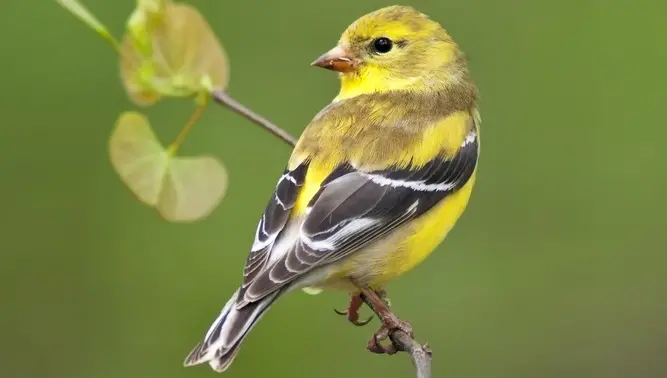
Conservation Efforts for Finch Birds
In light of the challenges faced by finch populations, concerted conservation efforts are underway to protect these birds and their habitats. By recognizing the vital roles finches play in ecosystems, many organizations are prioritizing initiatives aimed at safeguarding their future.
- Habitat Protection: One of the primary focuses of conservation efforts is safeguarding critical habitats essential for finch populations. Establishing protected areas, enhancing urban green spaces, and restoring native plant communities are key strategies that bolster habitat resilience to environmental changes.
- Invasive Species Management: Efforts to control invasive species are crucial for reducing competition and predation pressure on finch populations. Monitoring and managing invasive flora and fauna can improve the stability of local ecosystems, allowing native finches to thrive.
- Public Awareness Campaigns: Raising awareness about the ecological significance of finches plays a key role in mobilizing public support for conservation efforts. Educational programs and citizen science initiatives can engage communities in monitoring local finch populations and protecting their habitats.
- Research and Monitoring: Ongoing research into finch populations and their ecological requirements helps inform conservation strategies. By studying trends, behaviors, and habitat preferences, conservationists can adapt their approaches to address emerging challenges facing finches.
- Community Engagement: Involving local communities in conservation efforts fosters a sense of stewardship for local ecosystems. Initiatives that encourage habitat restoration and sustainable practices empower individuals to contribute to the protection of finch populations.
By prioritizing these conservation strategies, we can work towards ensuring the survival of finch species and maintaining the ecological balance they help sustain in their environments.
Role of Finch Birds in Ecosystems
Finches play a vital role in maintaining ecological balance within their habitats. Their feeding habits, social structures, and interactions with other species contribute to the health and resilience of their ecosystems.
- Seed Dispersal: As granivorous birds, finches are significant seed dispersers, facilitating plant reproduction and genetic diversity. By consuming seeds and excreting them in different locations, finches contribute to plant community dynamics and the spread of native flora.
- Pollination: Certain finch species also aid in pollination, indirectly supporting the reproductive processes of various flowering plants. Their feeding on nectar-rich flowers encourages cross-pollination, promoting healthy plant populations.
- Food Source for Predators: Finches occupy an essential niche in the food web, serving as prey for numerous predators, including birds of prey and small mammals. Their presence in ecosystems contributes to the complex interactions that sustain biodiversity.
- Indicators of Ecosystem Health: Due to their sensitivity to environmental changes, finches can serve as important indicators of ecosystem health. Monitoring shifts in their populations or behaviors can provide valuable insights into the overall state of habitats, guiding conservation efforts.
By recognizing the integral role of finches within ecosystems, we can appreciate their contributions to ecological balance and the importance of protecting their habitats for the benefit of broader environmental health.
Finch Birds in Culture
Finches hold a unique place in various cultural narratives, symbolizing a range of themes tied to freedom, resilience, and connection to nature. Their enchanting songs, vibrant colors, and social behaviors have inspired admiration and respect across many cultures.
- Symbolism of Joy: Finches often symbolize joy and celebration in numerous cultures. Their cheerful songs evoke feelings of happiness, while their bright plumage dazzles observers. In many Native American traditions, finches are seen as embodiments of happiness, inspiring traditional dances and festivities.
- Literary Representation: In literature, finches frequently represent innocence and vulnerability. Harper Lee’s renowned novel, “To Kill a Mockingbird,” features the protagonist’s surname, Finch, which accentuates themes of childhood innocence amid social injustice. Here, finches symbolize resilience and the capacity for personal growth.
- Mythological Connections: In ancient mythology, finches frequently symbolize love and beauty. For instance, in Greek mythology, they are associated with Aphrodite, the goddess of love, representing harmony and affection. Their ties to folklore emphasize the significant role they play in transmitting cultural ideals.
- Hope and Spirituality: Finches often symbolize hope and renewal, encouraging individuals to appreciate the beauty of life. In various cultures, their presence is linked to fostering spiritual connections, suggesting that they act as messengers carrying profound meanings for humankind.
Through these cultural representations, finches emerge as compelling symbols that capture the essence of joy, innocence, and resilience, resonating within the hearts of people across generations.
Symbolism of Finch Birds in Literature
Finches possess profound symbolic connotations within literature, frequently embodying key themes related to innocence, freedom, and the quest for personal growth. Their presence in various works contributes depth and meaning to narratives.
- Innocence and Vulnerability: Many literary depictions showcase finches as symbols of innocence, particularly when addressing themes of childhood. In “To Kill a Mockingbird,” Harper Lee uses the Finch surname to emphasize the protagonist’s journey through social injustice, highlighting the fragility of innocence amid societal struggles.
- Freedom and Resilience: Finches often symbolize freedom, embodying the spirit of exploration and adaptability. Their ability to thrive in varied environments represents resilience and the capacity for overcoming obstacles. Writers frequently use this symbolism to inspire characters and readers alike to embrace life’s challenges.
- Nature’s Connection: Literature that emphasizes human connections to nature often features finches, reflecting the broader ecological relationships present in our world. These birds serve as reminders of the beauty and interconnectedness of all living beings, allowing readers to appreciate their role within the natural order.
- Hope and Change: As symbols of hope, finches often appear in narratives that reflect themes of transformation or renewal. Their presence may indicate the possibility of change and the emergence of new beginnings, inspiring characters to embrace new paths in life.
By exploring the rich symbolism of finches in literature, readers can gain deeper insights into the emotional nuances and thematic elements woven into narratives, revealing the enduring significance of these birds in human storytelling.
Finch Birds in Art and Popular Media
Finches have a notable presence in art and popular media, where they symbolize a range of themes, including joy, freedom, and adaptability. Their vibrant colors and melodic songs have inspired artists and creators alike throughout history.
- Visual Art: In the realm of visual art, finches appear in various forms, from classical paintings to modern illustrations. Artists often depict these birds in conjunction with natural settings, emphasizing their beauty and grace. The juxtaposition of finches with flowers or other components of nature enhances their symbolism of vitality and resilience.
- Film and Television: Finches occasionally appear in film and television, representing themes of hope and freedom. Their enchanting vocalizations and lively movements create a visual and auditory backdrop that enriches storytelling. By integrating finches into narratives, creators highlight the importance of connection with nature.
- Children’s Literature: Finches frequently feature in children’s books, introducing young readers to the wonders of nature. Their cheerful songs and engaging behaviors serve as focal points for storytelling, conveying uplifting messages about friendship, adventure, and the beauty of the natural world.
- Social Media and Advocacy: In today’s digital age, finches are often showcased on social media platforms, capturing the attention of wildlife enthusiasts and conservation advocates. Photography and videos of finches highlight their captivating behaviors, fostering appreciation for these birds and the need for habitat protection.
The presence of finches in art and popular media reflects their enduring appeal and cultural significance. Their vibrant imagery and melodic songs continue to inspire creative expressions that resonate with audiences globally.
Finch Birds in Folklore and Mythology
Finches inhabit a rich space in folklore and mythology, embodying themes that transcend cultures and generations. Their presence in various narratives reflects deeper meanings tied to creation, spirituality, and the human experience.
- Mythical Associations: In Greek mythology, finches are closely linked to divine figures, symbolizing beauty and love. Their songs are often portrayed as divine messages, conveying spiritual truths and fostering harmonious relationships. These connections highlight the cultural reverence for finches as sacred beings.
- Cultural Significance: Various indigenous cultures celebrate finches as sacred animals embodying essential qualities such as hope, joy, and resilience. In Native American traditions, finches symbolize the celebration of life and the interconnectedness of all living beings. They are often featured in stories embodying cultural values and communal bonds.
- Celtic Folklore: In Celtic traditions, finches are seen as symbolic messengers. Tales of finches stealing fire encapsulate the tenacity and adaptability of these birds, representing courage and strength amid adversity.
- Archetypal Symbols: Across cultures, finches serve as archetypal symbols associated with creativity and transformation. Their ability to thrive in diverse environments mirrors the human experience of navigating challenges and fostering personal growth.
The role of finches in folklore and mythology emphasizes how these birds have become culturally embedded symbols, resonating with ancient wisdom and contemporary values alike. Their stories continue to inspire and connect individuals to nature and the profound messages found within its beauty.
In conclusion, the world of finches is a testament to the beauty and complexity of nature. Their diverse species, social behaviors, and ecological significance reflect the interconnectedness of life and the delicate balance of ecosystems. As we continue to explore and understand finches, we must remain vigilant in our conservation efforts, ensuring that future generations can equally appreciate these delightful birds and the roles they play in our world. By advocating for their habitats and educating others about their importance, we can contribute to the preservation of finches and the ecological integrity of the environments in which they thrive.

